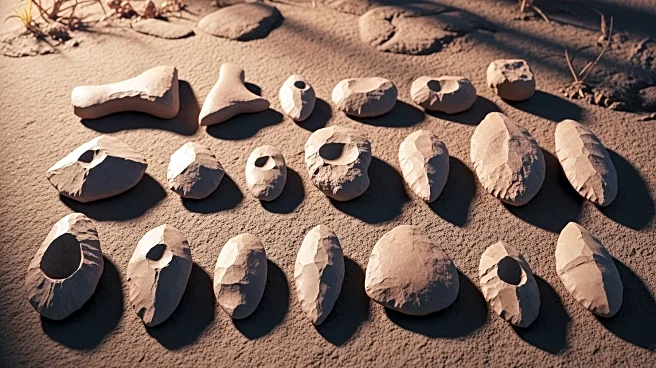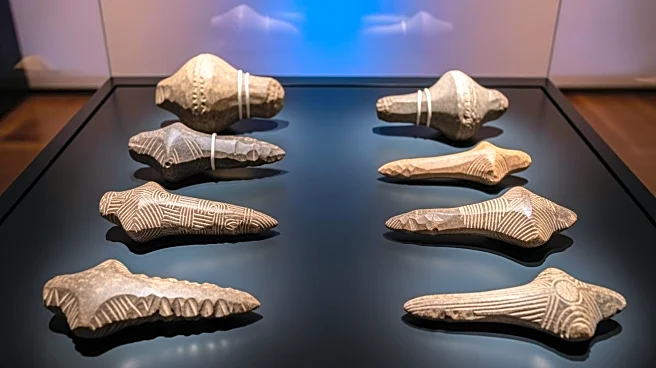What's Happening?
Recent findings have confirmed that Neanderthals, not Homo sapiens, created the world's oldest known cave art. This discovery was made in several Spanish caves, where hand stencils, geometric shapes, and other
non-figurative art forms were dated to over 64,000 years ago, predating the arrival of modern humans in the region. The research, involving uranium-thorium dating of flowstones overlying the art, provides strong evidence of Neanderthal artistic capabilities, challenging long-held beliefs about the origins of art.
Why It's Important?
This discovery significantly alters the understanding of Neanderthal cognitive abilities and their cultural sophistication. It challenges the notion that artistic expression is unique to Homo sapiens, suggesting that Neanderthals possessed a level of creativity and symbolic thinking previously unrecognized. This could lead to a reevaluation of the cultural and intellectual capabilities of Neanderthals, impacting theories about human evolution and the development of art. The findings also highlight the importance of interdisciplinary research in uncovering the complexities of prehistoric life.
Beyond the Headlines
The implications of this discovery extend beyond archaeology, touching on philosophical and ethical considerations about what it means to be human. It raises questions about the criteria used to define art and creativity, and whether these should be expanded to include other hominins. The findings may also influence cultural perceptions of Neanderthals, shifting the narrative from one of primitive 'cavemen' to a more nuanced understanding of their capabilities and contributions to human history.











